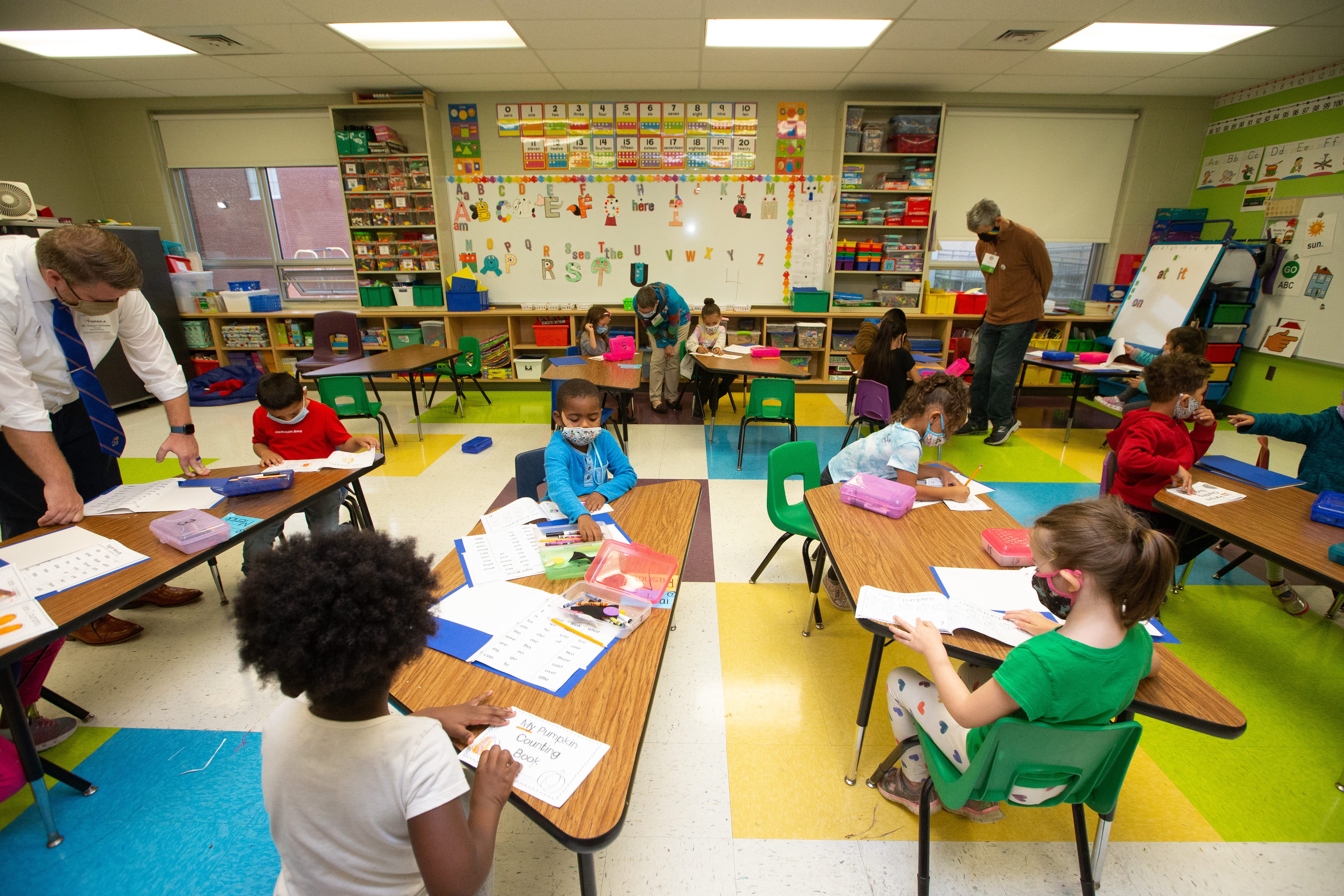Exploring the Different Training Methods in Main Science Education Today
Inquiry-based understanding, hands-on experiments, and the integration of technology are redefining how instructors involve young minds. Additionally, collective approaches and differentiated instruction are being used to provide to the diverse demands of students, boosting both involvement and understanding.
Inquiry-Based Discovering
Inquiry-Based Learning (IBL) is an instructional method that encourages pupils to check out scientific concepts via doubting, investigation, and hands-on testing. This technique stresses the role of pupils as energetic individuals in their understanding, advertising critical reasoning and problem-solving abilities. By engaging with real-world inquiries, students come to be determined and interested, which improves their understanding of scientific principles.
In IBL, instructors work as facilitators, leading students as they navigate their inquiries instead than providing information straight. This student-centered strategy allows for differentiation, fitting various learning styles and paces. Students establish skills in developing hypotheses, developing experiments, and evaluating data, which are important for clinical proficiency.
Additionally, IBL fosters cooperation amongst trainees, encouraging them to share ideas and findings. This collective questions promotes social abilities and a sense of area within the class. Furthermore, the procedure of questions urges resilience, as pupils find out to embrace failure as a tipping stone toward understanding.
Hands-On Experiments
Hands-on experiments are a vital component of effective scientific research education and learning, enhancing the concepts of inquiry-based discovering. These experiments enable pupils to involve straight with clinical concepts, cultivating a deeper understanding via experiential knowing. By manipulating materials and observing end results, young students can understand abstract theories in substantial means.
Such activities advertise critical reasoning and analytical skills, as pupils hypothesize outcomes, conduct experiments, and assess results. This procedure urges them to ask inquiries, improve their understanding, and establish a clinical way of thinking. Hands-on experiments can be tailored to varied understanding styles, making certain that all trainees have the opportunity to engage meaningfully with the content.
Furthermore, hands-on experiments usually urge cooperation among peers, promoting synergy and communication abilities. Functioning in teams allows trainees to share concepts, go over findings, and pick up from one an additional, which enhances their general academic experience.
Including hands-on experiments right into the primary scientific research curriculum not just improves the discovering setting however additionally grows a lifelong rate of interest in scientific research. By actively participating in their education, pupils are extra most likely to develop a passion for clinical query that expands beyond the classroom.

Technology Combination
Incorporating innovation right into key scientific research education has actually ended up being significantly important in promoting student interaction and boosting finding out results. Making use of electronic devices, such as interactive simulations, virtual labs, and educational software program, supplies trainees with possibilities to discover scientific ideas in innovative means. These resources facilitate a much deeper understanding of complex subjects by permitting students to picture and manipulate variables that would certainly be unwise in a traditional class setting.
Additionally, innovation combination urges personalized learning experiences. Pupils can proceed at their very own rate, taking another look at tough concepts with multimedia sources, which deal with different knowing styles. This adaptability not just supports private development however additionally grows a feeling of autonomy in learners.
In addition, technology functions as a bridge to real-world science, attaching pupils with current research and professional payments. Accessibility to online data sources and scientific journals widens trainees' perspectives on scientific inquiry and cultivates critical believing skills.
Collaborative Understanding
Joint understanding plays a crucial role in key scientific research education and learning by cultivating synergy and interaction skills among pupils. This method encourages learners to collaborate, share knowledge, and involve in analytic, which improves their understanding of clinical concepts. By joining team activities, trainees discover to verbalize their ideas, pay attention to varied viewpoints, and discuss options, every one of which are necessary abilities in both scholastic and real-world contexts.

Research shows that collaborative discovering can cause enhanced inspiration and engagement in scientific research topics, as pupils find enjoyment in shared experiences (primary science tuition Singapore). Additionally, this technique prepares pupils for future collective endeavors, furnishing them with the abilities essential for effective synergy in college and professional atmospheres. Ultimately, embracing joint knowing in main science education can considerably improve the learning experience and promote a much deeper understanding of scientific inquiry
Distinguished Direction

Differentiated direction can show up in various methods, such as differing the material, procedures, or products of learning. Instructors may use tiered jobs that supply varying degrees of complexity, enabling students to function at their particular readiness degrees. Furthermore, flexible grouping techniques can assist in cooperation among pupils with different capabilities, cultivating peer understanding.
Analysis plays an essential duty in this technique, as it educates home guideline and helps teachers understand each pupil's special demands. Formative assessments, such as monitorings and tests, can direct instructors in changing their techniques to boost discovering end results. primary science tuition Singapore. Inevitably, by applying set apart guideline in primary science education and learning, instructors can cultivate a more equitable and efficient knowing setting, equipping all pupils to reach their complete capacity in understanding clinical sensations
Conclusion
In recap, the diverse training This Site techniques in key scientific research education, consisting of inquiry-based knowing, hands-on experiments, technology assimilation, collective knowing, and differentiated direction, jointly contribute to a much more efficient understanding atmosphere. These methods advertise crucial reasoning, problem-solving skills, and a much deeper comprehension of scientific ideas. By applying these methods, teachers can create interesting and supportive classrooms that address the different requirements of trainees, ultimately fostering a long-lasting passion in science and improving scholastic achievement.
Inquiry-Based Knowing (IBL) is an instructional strategy that urges pupils to check out clinical concepts via doubting, investigation, and hands-on experimentation.Collective discovering plays an essential duty in main scientific research education and learning published here by fostering team effort and interaction skills among students.Research shows that collective knowing can lead to boosted inspiration and engagement in scientific research subjects, as pupils find pleasure in shared experiences.In promoting a comprehensive discovering environment, set apart guideline arises as a vital technique to accommodate the varied needs and capacities of students in key scientific research education. Inevitably, by executing separated direction in main science education and learning, teachers can cultivate a much more effective and equitable understanding atmosphere, equipping all students to reach their full possibility in understanding scientific phenomena.